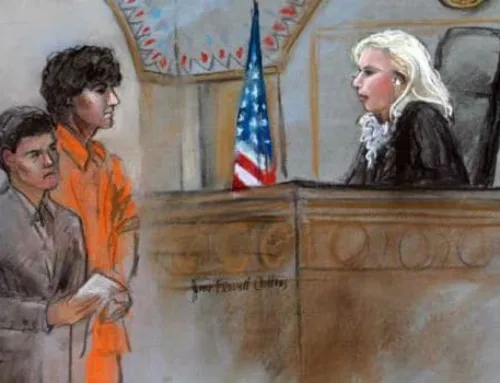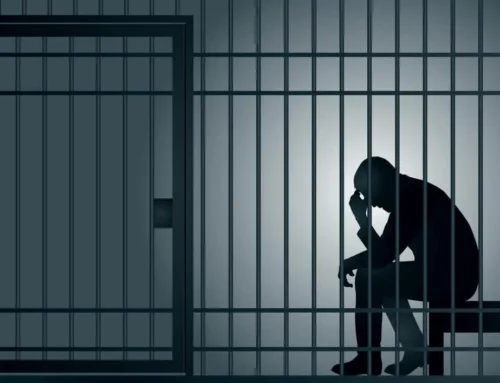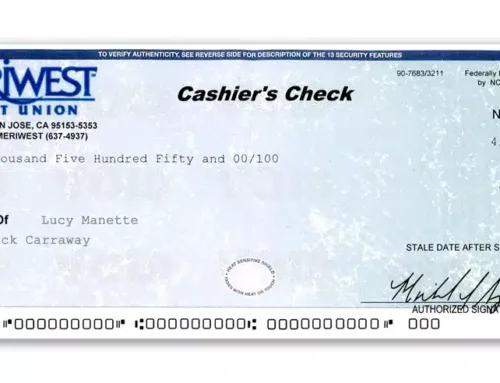Our Seattle federal crime lawyers represent people in many Washington communities who have been charged with a wide range of federal offenses. The most common offenses our firm sees include:
Our attorneys have over two decades of combined experience fighting for the rights of criminal defendants in federal court.
With this experience, we know that the federal criminal court system can be complex. There are several steps and procedures typically involved in a single case and its entirety can be filled with stress and anxiety. To help ease your tension, lets look in detail at the elements involved in a federal criminal case.
Our Washington criminal defense attorneys will discuss the following in this article:
1. What is an “arrest” leading to a federal criminal charge?
1.1 Direct Arrest
1.2 Arrest Warrant
1.3 Formal Charges Following a Grand Jury
2. What is a first appearance?
3. What happens at an arraignment?
4. How is the release/detention of a defendant determined?
5. What does “discovery” refer to in a federal case?
6. What does investigation mean?
7. What is plea bargaining?
8. What is motions practice in federal court?
9. What happens during a federal criminal trial?
10. What is sentencing?
11. What happens in an appeal?
1. What is an “arrest” leading to a federal criminal charge?
In terms of a federal criminal case, an “arrest” refers to the act of authorities taking a person into custody for the alleged violation of a federal crime.
An arrest can take place in three different ways in federal criminal cases. These are via:
- A direct arrest;
- An arrest warrant, and
- Formal charges following a grand jury.
1.1 Direct Arrest
This is the simplest form of an arrest in a federal case. A direct arrest is when police witness a suspect commit a federal offense and then arrest him and take him or her into custody. The authorities have probable cause to believe the person committed a crime because they saw the event take place.
1.2 Arrest Warrant
Sometimes the Assistant U.S. Attorney (AUSA) may seek permission for an arrest from a judge and ask for an arrest warrant. In this scenario, the AUSA prepares a complaint that sets forth the facts of the offense for which the government wants to arrest a suspect. The complaint must show probable cause that the suspect committed the crime outlined in it. If, after reviewing the complaint, a judge finds that probable cause does exist, the judge will issue a warrant for the suspect’s arrest. Once issued, authorities may legally arrest the suspect.
1.3 Formal Charges Following a Grand Jury
In many federal cases, an accused is arrested after a grand jury formally charges him with a crime. A grand jury may consist of 12 to 23 people. It hears evidence presented by the government attorney regarding the commission of an offense, or offenses. Typically, no evidence is presented from a defense attorney. Upon hearing the evidence from the government attorney, the grand jury then decides if there is probable cause to believe the suspect committed the crime in question.
If the jury finds probable cause, it then returns a written statement of the charges. This is called an “indictment.” If a person is indicted, federal agents have the legal authority to arrest him.
2. What is a first appearance?
First appearance refers to the beginning of a federal case where the person arrested for a crime appears, for the first time, before a federal magistrate. Several important things take place during this initial hearing. These are:
- The defendant learns of the charges filed against him and views an affidavit that summarizes the evidence of the charges;
- The defendant is informed of certain constitutional rights (e.g., the right to remain silent);
- The accused is asked if he can afford an attorney (if not, a public defender may be appointed if the defendant is eligible for one); and,
- The court may address the issue of whether the accused should be released from custody or detained.
Present at the first appearance are:
- The magistrate;
- The AUSA; and,
- A defense attorney.
3. What happens at an arraignment?
An arraignment is a procedure where the defendant is brought before the court in order to enter a plea to the charge(s) filed against him. The charges are read, and the accused is asked to plea either “guilty” or “not guilty.” Prior to the entering of this plea, the defendant has a right to:
- View a copy of the indictment filed against him;
- Have an attorney be present; and,
- Have the indictment read to him or have the substance of the charges against him be explained by the judge.
The defendant typically must be present at the arraignment. But, please note that the Federal Rules of Criminal Procedure state that the defendant can have his presence waived if he is facing only a misdemeanor charge. Further, the accused can sign a written waiver and have his attorney appear on his behalf if he is entering a plea of not guilty and the judge accepts the waiver. Also note that if the defendant consents, he may appear for the arraignment via a video teleconference.
4. What is the release/detention of a defendant?
“Release” and “detention” refer to whether a defendant is released from custody, or remains in prison, while his federal case is pending. This determination is made during a detention hearing, which is sometimes referred to as a bond hearing. This hearing is conducted soon after an accused is arrested and it may be combined with another pretrial hearing (e.g., the first appearance or the arraignment).
During the detention hearing, the prosecutor and the defense attorney present evidence regarding whether the defendant should be released from prison or detained. It is then up to the judge to decide the issue. If the judge decides that the accused should be released, then he may impose certain conditions of release on the accused (e.g., travel restrictions or GPS monitoring).
Under 18 U.S. Code 3142, the judge can actually decide on one of the following at the detention hearing:
- To release the defendant on his personal recognizance or upon execution of an unsecured appearance bond;
- To release the accused on a condition or a combination of conditions;
- To temporarily detain the defendant to allow for the revocation of conditional release or deportation; or,
- To detain the accused.
Please note that the defendant will not be released if the judge determines that he is either:
- A flight risk, or
- A danger to the community;
And that no conditions of release exist that can ameliorate these issues.
5. What does “discovery” refer to in a federal case?
“Discovery” in a federal case refers to the time period in which the parties (the government and the defense) can obtain information from one another. Federal criminal discovery is typically limited to materials that are intended to be used at trial, as well as evidence that exonerates the accused. This is evidence that shows he is not guilty of a wrongdoing.
There are four main sources of discovery in federal criminal cases. These are:
- Rule 16 of the Federal Rules of Criminal Procedure – which requires the government to provide the defense with such items as the: (1) a defendant’s statements, criminal record, and test results; and, (2) items it intends to introduce at trial.
- Exculpatory evidence in favor of the accused;
- Impeaching information – which means information that tends to question the credibility of a witness for the government; and
- The Jencks Act – which requires a party calling a witness to give to the other party any recorded statements of that witness pertaining to the witness’s testimony.
In many federal criminal cases, discovery usually begins after a defendant has been arraigned.
6. What does investigation mean?
There are many agencies in the Federal Government that have criminal investigators to collect and provide evidence and information for the United States Attorneys.
Some of these agencies include the:
- Federal Bureau of Investigation (FBI);
- Bureau of Alcohol Tobacco, and Firearms (ATF);
- Homeland Security Investigation (DHS/HIS); and,
- Drug Enforcement Administration (DEA).
The investigators employed with these agencies investigate federal crimes and gather evidence for prosecutors. They can also help prosecutors understand complex details of a crime. A federal criminal case can involve one agency or several agencies.
The defense has the right to conduct its own investigation in a federal criminal case, using private investigators. This can occur either before or after a defendant is charged. The defense investigation typically involves finding and gathering documents, locating and interviewing witnesses, and visiting and photographing the scene of the alleged crime.
7. What is plea bargaining?
Please bargaining is the process where the prosecutor and the defendant (and his attorney) try to work out a mutually satisfactory disposition to a case. For example, a defendant and prosecutor may agree that the accused will plead guilty to a lesser crime than the one charged. Or, consider a defendant who is charged with multiple crimes. A plea bargain may work so that the accused pleads guilty to one crime while all other charges get dropped.
Plea bargains can be beneficial to both prosecutors and defendants. For prosecutors, they help secure a guilty verdict on at least one charge. For defendants, they reduce the risk of going to trial. By pleading guilty to a lesser offense, or to just one crime, the accused will receive a lesser sentence than if he was found guilty at trial – of the more serious offense or of all the charges.
All plea bargains must be approved by the court. If approved, the case does not go to trial and it moves directly to sentencing. The bargaining process is governed by Federal Rule of Criminal Procedure 11(e).
8. What is motions practice in federal court?
Motions practice refers to the act of either the prosecutor or defense attorney doing the following:
- Filing legal motions with the court, prior to trial; or,
- Responding to a motion filed by the other party.
A motion is essentially a request by a party that the court make a certain ruling on an issue before a trial begins. A motion can be brought on a variety of matters, including such things as:
- Admissibility of certain evidence in the trial;
- The correct court to hear the case; and
- A witness’s testimony.
Common pre-trial motions include:
- Motion to Dismiss – where a party tries to get the judge to dismiss a charge or the case in its entirety; and,
- Motion to Suppress – where a party tries to keep certain evidence or testimony from being admitted into evidence;
- Motion to Sever- where a party tries to separate counts or defendants for trial.
9. What happens during a federal criminal trial?
A federal criminal trial is basically the process where the facts of a case are told to a jury. The jury then decides whether or not the defendant is guilty or innocent of the crime, or crimes, being charged. In the course of the trial, the prosecutor uses testimony from witnesses and physical evidence to explain his version of the case. The defendant and his attorney also tell their version of events using witnesses and evidence as well. In some cases, the parties may use experts to help the jury understand certain facts or pieces of evidence.
During a trial, the judge serves as the neutral party that manages the trial. The judge determines what evidence can and cannot be admitted. The judge also tries to ensure that the trial is run fairly and without prejudice to either side.
The following are important stages of a federal criminal trial:
- Opening Statements – these are made by the prosecutor and defense attorney and they’re used by each to briefly tell their version of the facts to the judge/jury.
- Presentment of Cases – this is where the parties call witnesses and elicit testimony that helps provide the factual account of a case. This is also where the parties may introduce physical evidence that they believe is relevant to the matter.
- Closing Arguments – this is the last time for the prosecutor and defense attorney to address the jury. These arguments summarize a party’s testimony and evidence and they ask the jury for a verdict in their respective favors.
- Jury Instructions – these are given by the judge and they instruct the jury on the appropriate law they must use in reaching their verdict.
- Jury Deliberations – this is the process whereby the jury meets in private to discuss the facts and laws of a case in order to decide if a defendant is guilty or innocent.
- Announcement of the Verdict – after the jury decides on guilt, it is brought back into the courtroom and the judge reads the jury’s verdict to the parties in the courtroom.
10. What is sentencing?
Sentencing occurs after a defendant is convicted of a crime, either by guilty plea or after being found guilty at trial. During this phase, the trial judge determines the punishment that the defendant must serve for his crime, or crimes. According to 18 U.S.C. 3551, a guilty party can be sentenced to :
- A term of probation;
- A term of imprisonment, and/or
- A fine.
The Federal Sentencing Guidelines are sentencing rules that help a judge determine a sentence. The Guidelines help determine a sentence for a federal crime by looking at two factors:
- The conduct associated with an offense; and,
- The defendant’s criminal history.
There is a specific table, the Sentencing Table, within the Guidelines that uses these two factors to specify a sentencing range. The range is given in terms of months. Federal judges can either:
- Follow the guidelines; or
- Make departures from them.
In the latter case, the judge can increase a recommended sentence (i.e., make a sentence more severe) or decrease a recommended sentence (i.e., make a sentence less severe).
11. What happens in an appeal?
If a person gets convicted of a crime in federal court, that person can appeal, or challenge, that decision. The appeal basically asks a higher court, known as an appellate court, to reverse the conviction and/or sentence imposed by the lower court (typically referred to as the trial court).
If a defendant files an appeal, he will be then known as the appellant. And, he must show that some legal error occurred during his trial in order to win. Please note that only a defendant can file an appeal. A prosecutor can never appeal an acquittal in a federal criminal case.
Please know that an appeal is not a new trial. The appellate court does not:
- Retry a case,
- Hear or consider new evidence, or
- Listen to testimony from witnesses.
Rather, the role of the appellate court is to review the case that took place in the trial court to determine if there were any legal errors. If the court discovers errors, then it has to decide if those errors substantially affected the rights of a party.
On appeal, the appellate court can overturn a ruling of the trial court if it determines two things. These include:
- That the trial court committed some type of legal error, and,
- That the error “prejudiced” a party.
“Prejudice” means there is a reasonable probability that the legal error made a difference in the outcome of the case.
If you or a loved one is facing federal criminal charges, contact Black & Askerov today.
Our talented and committed federal criminal defense attorneys have over 30 years of combined experience defending clients against federal offense charges. They know the law and they’re passionate in their defense. Contact them today and get the legal defense that makes the difference.





